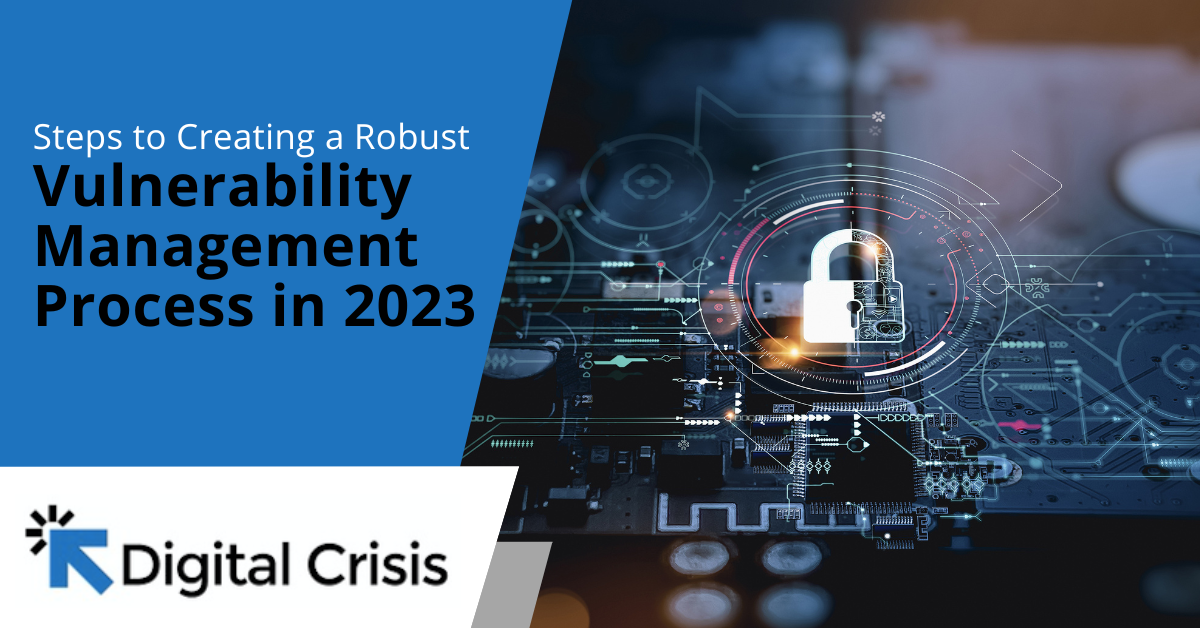
With the rise of cyberattacks, organizations must stay ahead of the curve to protect their systems from malicious activity. A robust vulnerability management process is essential for protecting your organization from threats.
Never has this been more true than in 2023, when threats are on the rise and security teams are preparing for the latest wave of threats, emerging technologies, and heightened regulation.
Having an effective vulnerability management strategy is no longer an option – it’s a necessity.
This post will provide a roadmap of the steps needed to create a successful vulnerability management process in 2023.
Put simply, vulnerability management is the process of identifying, assessing, and mitigating weaknesses in a system or network. It can be broken down into four main processes:
Vulnerability management is very much a continuous process, as organizations must stay informed of the latest security trends, patch new threats, and monitor their systems for malicious activity regularly to avoid falling prey to new vulnerabilities.
Let’s take a closer look at each of these steps:
Identifying vulnerabilities is the first step in developing a successful vulnerability management process. If you’re not aware of the weaknesses in your system, it’s impossible to respond to them.
Taking note of potential threats and identifying any weak points are the key to successful vulnerability identification.
Organizations can use automated scanning tools along with manual inspection techniques to identify potential vulnerabilities. These techniques should include identifying the components of the system, such as files, applications, or accounts, that may be prone to being vulnerable.
Once vulnerabilities are identified, they must be assessed to determine the severity and impact they could have on the system. Organizations can use tools such as security frameworks to facilitate risk assessments, and penetration testing to test system weaknesses.
Vulnerability assessment tools should consider the impact of each vulnerability on the system, including their potential to damage critical data, affect performance, or be exploited by malicious actors. This will enable organizations to prioritize their security efforts by addressing the most dangerous threats first.
Vulnerability reporting is the process of documenting and communicating the findings of a vulnerability assessment. Reporting vulnerabilities is essential for forming the basis of a successful vulnerability management process. Once vulnerabilities are identified and assessed, they should be documented in a system and shared with the appropriate stakeholders.
Organizations should maintain a vulnerability database to track and report vulnerabilities in their systems as well as a process for regular security reporting. Having a simple way to access data which outlines the current state of system security can be extremely helpful for staying up-to-date on potential risks.
This will enable organizations to keep track of the security posture of their systems and prioritize their efforts in responding to vulnerabilities.
The last step in creating a successful vulnerability management process is remediating the vulnerabilities. Once vulnerabilities have been identified, assessed and reported, organizations must respond to them before they can become exploited by malicious actors. This could range from patching software, implementing new policies, or adding additional layers of security.
The goal of vulnerability remediation is to solve the underlying problem, not just the symptoms. It’s important to remember that threats evolve quickly and organizations must be prepared to adjust their remediation plans accordingly.
With cyberattacks on the rise and stricter regulations in place, having an effective vulnerability management process has never been more essential. Organizations must be aware of their system’s weaknesses and have a plan in place to address them quickly and effectively, ensuring systems remain safe and secure.
If there was ever a moment to invest in a strong vulnerability management process, the time is now. Organizations can use the roadmap provided to develop a successful vulnerability management process that will keep their systems safe in the years ahead.
Developing an effective vulnerability management process is essential for keeping your organization safe in the modern digital landscape.
Our experienced team has worked with organizations of all sizes to put in place the right processes and strategies to protect them from potential threats.
We can help your organization develop an effective vulnerability management process that meets the challenges of 2023 head-on.
Digital Crisis provides customized managed IT support with the tools you need to make informed decisions about the security of your organization. We assist businesses in operating smarter, not harder.
Contact us today!